The Expendables: NFC players who could be cap casualties as free agency nears

On Monday, we glanced at the books to find a player each AFC team could send packing in the coming weeks. Now, it’s on to the NFC. With help from Spotrac’s salary cap tracker, here’s a team-by-team breakdown of the most likely candidates to be cut from each NFC team.
Dallas Cowboys (Current projected cap space: $6.7 million)On the chopping block: RB Alfred Morris ($2.1 million cap hit; $500K dead money). Settling the Tony Romo situation would free up a little bit of extra change for the Cowboys—he’s set to cost $24.7 million against the cap, with a $19.6 million dead-money hit, hence the desire to rework his deal pre-trade. Elsewhere, this is a roster built more for contract restructuring than for releasing overpriced players. Morris’s contract is far from unreasonable, but he also barely played down the stretch. If the Cowboys opt to re-sign Darren McFadden or draft another back, Morris could be bumped.
New York Giants (Current projected cap space: $34.4 million)On the chopping block: RB Shane Vereen ($4.9 million cap hit; $1.1 million dead money). The Giants already axed running back Rashad Jennings, so cutting the versatile Vereen on top of that might leave them too thin in the backfield. Flip side: Vereen played just five games last season while battling a pair of triceps tears, so spending $5 million on him only makes moderate sense if he’s going to be ready to go in 2017.
Philadelphia Eagles (Current projected cap space: $11.6 million)On the chopping block: OLB Connor Barwin ($8.4 million cap hit; $600K dead money). Add another RB to the list here, too: The Eagles can save $4 million—significant for a team in need of cap space—by cutting Ryan Mathews this off-season. As for Barwin, he recently said he’d be open to taking a pay cut so he could stay in Philadelphia. The trade rumors are already circling around his name, though, which is good indication that the front office is hoping to reclaim some value rather than simply releasing him. Barwin proved a misfit in Jim Schwartz’s scheme, and that tiny dead-money penalty won’t force the Eagles’ hand.
Washington Redskins (Current projected cap space: $64.6 millions)On the chopping block: DB DeAngelo Hall ($5.1 million cap hit; $813K dead money). Hall will turn 34 this season (his 14th in the NFL, assuming he plays), and he is working his way back from the torn ACL that ended his ’16 campaign in September. Washington probably would not mind keeping his veteran presence at safety, but that cap hit is up there for an aging vet with injury concerns. A safer bet is that Hall winds up playing for less cash next season.
Chicago Bears (Current projected cap space: $58.8 million)On the chopping block: QB Jay Cutler ($16 million cap hit; $2 million dead money). The Bears may not say so publicly, but over at least the past few months they had to be glancing ahead to this off-season, when Cutler’s contract became far less burdensome. If they’re set on moving on at QB, the $14 million in savings they’d get from releasing Cutler outweighs the paltry dead money. Other options to free up a little space: underrated but oft-injured WR Eddie Royal ($5 million cap hit) and OLB Lamarr Houston ($7 million), who has had serious knee issues.
QB acquisition rankings: Who gives his 2017 team the best shot at contention?
Detroit Lions (Current projected cap space: $37.4 million)On the chopping block: DT Haloti Ngata ($7.7 million cap hit; $2 million dead money). The Lions have minimal depth at defensive tackle and Ngata, when healthy, remains a solid run-stuffing tackle, so the math may work in his favor here. Shy of releasing Matthew Stafford or Ziggy Ansah, though, Ngata is the player who could put the most money back into the Lions’ pockets. He just turned 33 and has missed a handful of time during his two Detroit seasons.
Green Bay Packers (Current projected cap space: $43.6 million)On the chopping block: DT Letroy Guion ($3.6 million cap hit; $333K dead money). In truth, the Packers do not have any contracts that really stand out as problematic (unless you count Clay Matthews being a $15 million player with declining production). They also tend to be rather passive in free agency and have $43 million in the bank already, so any cuts are likely to be performance-based. For the purposes of this exercise, however, Guion’s hit-to-dead money ratio works in the team’s favor.
Minnesota Vikings (Current projected cap space: $23.1 million)On the chopping block: RB Adrian Peterson ($18 million cap hit; $0 dead money). The Vikings are not going to retain Peterson at $18 million. Not when he will turn 32 in March and is coming off another knee injury (meniscus, this time). Perhaps he would be willing to rework his contract, vastly reducing that cap hit in exchange for a guaranteed-money topper—if Peterson’s not feeling his potential market, he could push for this. If not, the Vikings will hand him his walking papers.
Money on the mind? NFL free agents who helped or hurt their value in 2016 season
Atlanta Falcons (Current projected cap space: $28.8 million)On the chopping block: DE Tyson Jackson ($5.9 million cap hit; $3.2 dead money). There may not be enough in it for the Falcons to release Jackson, at least without designating him as a post-June 1 cut—that move would bump the dead money down to $1.6 million. But either way, Jackson’s price tag is too elevated for what he provided last season (13 tackles, zero sacks). Another pay cut-or-else candidate.
Carolina Panthers (Current projected cap space: $50.5 million)On the chopping block: RB Jonathan Stewart ($8.3 million cap hit; $3.5 million dead money). Designating Stewart as a post-June 1 cut would bump the dead-money number down to $2 million—saving the Panthers $6.25 million off this year’s cap—so that makes Stewart’s exit quite feasible. The sticking point, of course, is that, despite the fact that he’s about to turn 30 and has not played more than 13 regular-season games in five years, Stewart remains the Panthers’ clear top back. Cutting him would necessitate a move, via the draft or other means.
New Orleans Saints (Current projected cap space: $28.7 million)On the chopping block: QB Luke McCown ($1.75 million cap hit; $250K dead money). Frankly, it’s a little unusual to see the Saints with a) money to spend and b) a lack of unwieldy contracts, but here we are. Releasing McCown won’t make or break the Saints’ off-season plans—an extra $1.5 million might be a nice luxury, but it is not currently a need. Still, there’s also no reason to continue carrying three QBs if New Orleans believes 2015 pick Garrett Grayson is capable of backing up Drew Brees.
Tampa Bay Buccaneers (Current projected cap space: $72.8 million)On the chopping block: CB Alterraun Verner ($6.5 million cap hit; $0 dead money). Verner was viewed as a bubble player last off-season. This time around, with Vernon Hargreaves and Brent Grimes in place and the guaranteed money on Verner’s contract dried up, he’s an odds-on favorite to be bounced. What could keep him around is that friendly number next to Tampa Bay’s projected cap space. The Buccaneers really would lose nothing by hanging onto Verner into camp—he still would be a free-of-charge release then, if there’s no space for him.
Arizona Cardinals (Current projected cap space: $35.5 million)On the chopping block: S Tyvon Branch ($4.2 million cap hit; $500K dead money). This, in large part, comes down to health. Branch played a full 16 games with Kansas City in 2015, before jumping to Arizona; he suited up for a total of 11 contests in ’12, ’13 and ’16 (the first two years with Oakland). Branch does offer quite a bit of versatility on the back end, which Arizona—and all teams, to some extent—value. That’s just a pricey contract for a banged-up player.
Re-picking Round 1 of the 2016 NFL draft
1. Rams select Dak Prescott, QB, Mississippi State (Actual Pick: Jared Goff, QB)
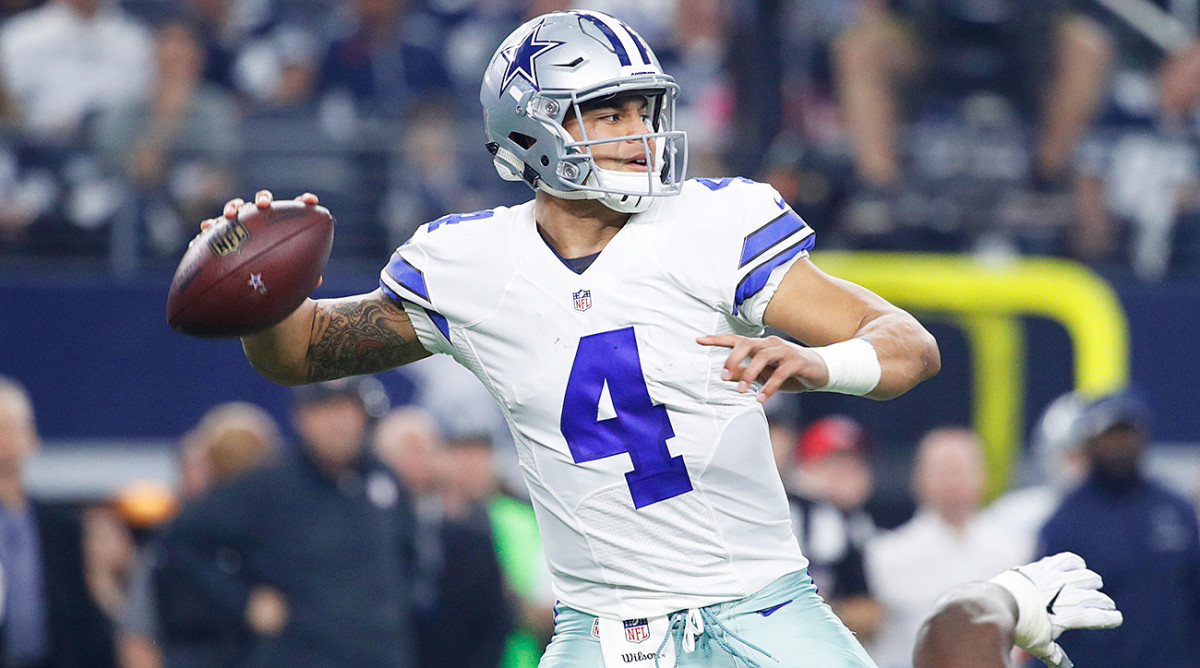
This spot went to Carson Wentz at the season’s midpoint, but the stretch run revealed Prescott’s polish and Wentz’s inconsistencies. Plug in the Offensive Rookie of the Year next to Todd Gurley (who won the award in 2015) and Sean McVay gets to open his Los Angeles coaching tenure at the helm of a dynamic backfield without writing off another season in the name of Goff’s NFL acclimation process.
2. Eagles select Carson Wentz, QB, North Dakota State (Actual Pick: Wentz)
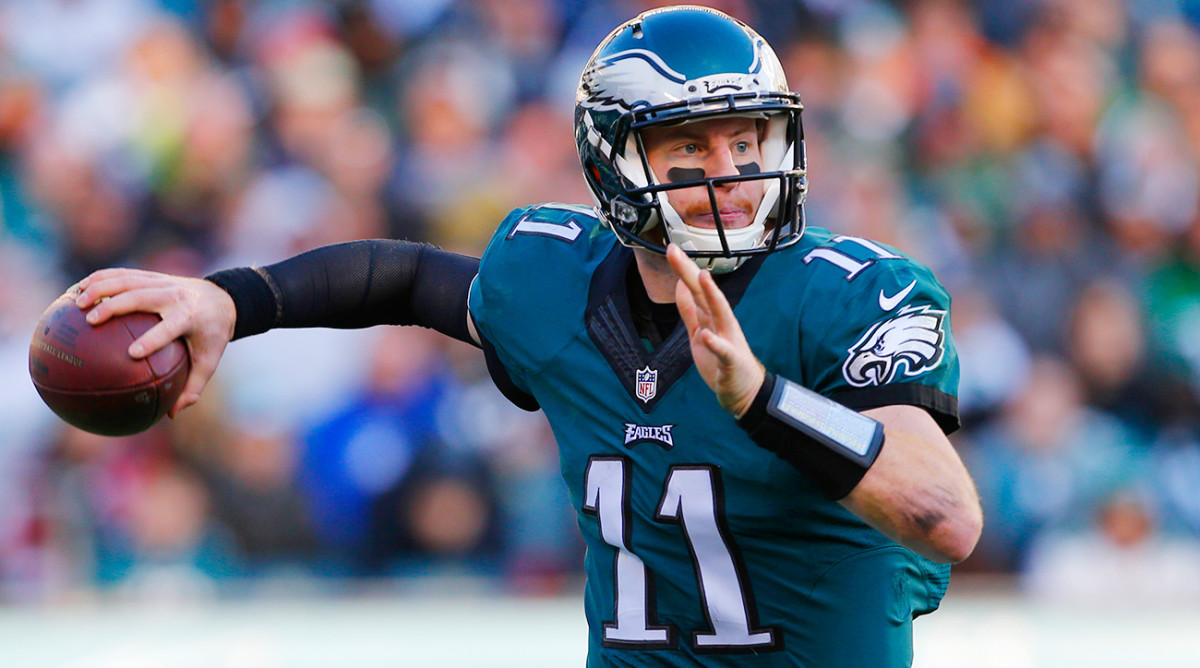
He made more mistakes as teams figured him out, but Wentz appears to be the franchise QB the Eagles were looking for when they forked over five picks to the Browns to move up to this spot last spring. The early-season concerns about throwing the FCS star into the fire were unsubstantiated—Philly clearly knew he had the makeup to learn some hard lessons on the fly without falling apart.
3. Chargers select Joey Bosa, Edge, Ohio State (Actual Pick: Bosa)
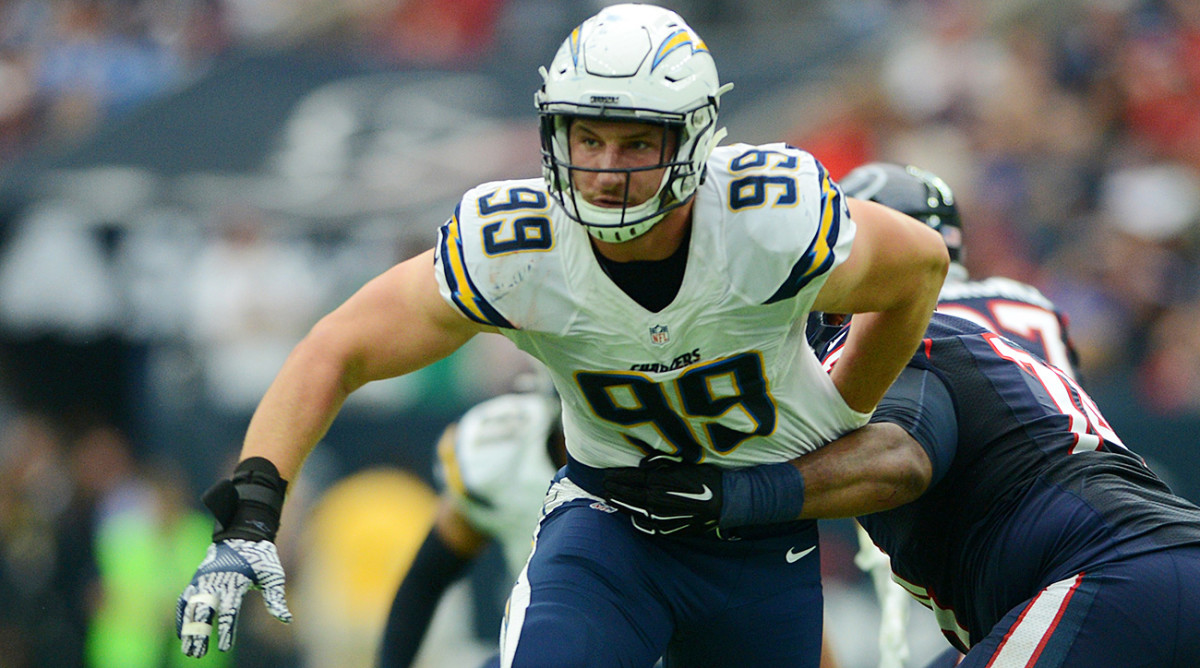
Once he got his rookie season rolling after a prolonged holdout over his rookie contract, Bosa changed the complexion of San Diego’s entire defense, racking up 10.5 sacks in just 12 games and playing with the relentless motor of a guy trying to prove his worth on every snap. In the wake of Melvin Gordon’s bounceback campaign, there’s no need for L.A. to covet any of this draft’s splashier top-five picks. Speaking of which...
4. Cowboys select Ezekiel Elliott, RB, Ohio State (Actual Pick: Elliott)

This is a no-brainer for Jerry Jones & Co. As a rookie, Elliott instantly became the centerpiece of the regular season’s best team, and Dallas has given him the supporting personnel to chase every franchise and league record he can name.
5. Jaguars select Jalen Ramsey, DB, Florida State (Actual Pick: Ramsey)

Yes, yet another team sticking with its top-five pick. Ramsey wore the frustrations of Jacksonville’s flop of a 2016 campaign on his sleeve, but he also went toe-to-toe with DeAndre Hopkins, Amari Cooper and other elite wideouts from the jump and more than held his own. There’s emotional and technical growth ahead, but the Jags appear to have a shutdown corner in the making.
6. Ravens select Jack Conklin, OT, Michigan State (Actual Pick: Ronnie Stanley, OT)
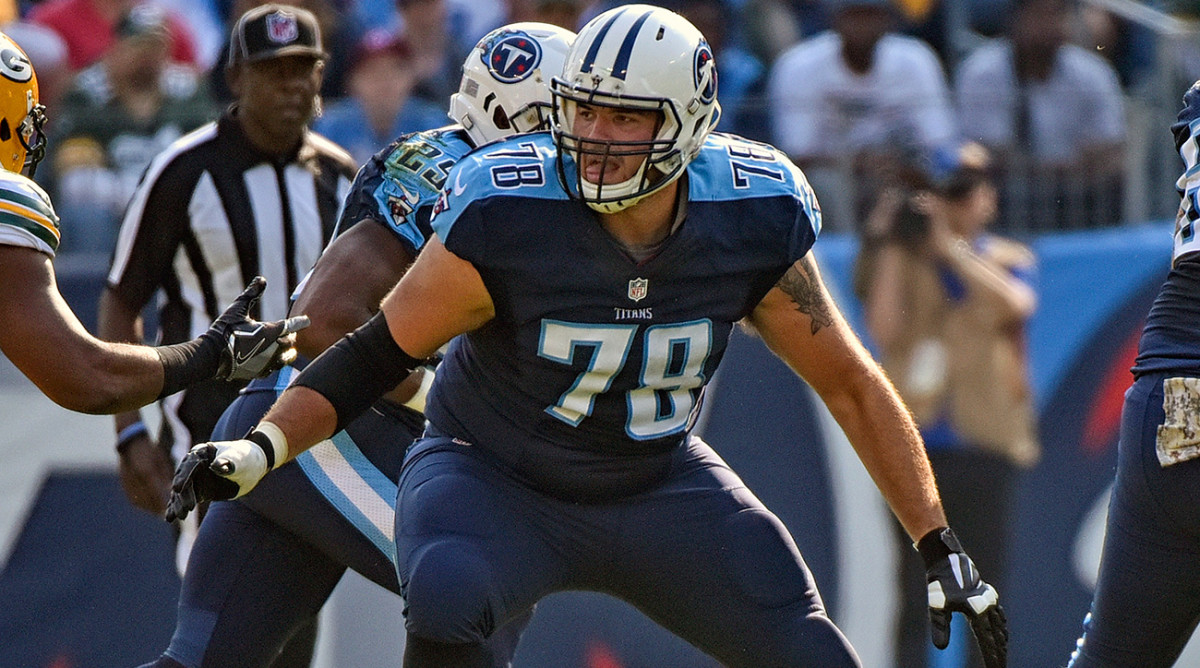
Stanley put together a perfectly fine, if injury-shortened, rookie campaign in Baltimore, but he did not earn All-Pro honors like Conklin did on the right side of Tennessee’s road-grading O-line. (Ezekiel Elliott and Tyreek Hill were the only other rookies to make the team.) That’s enough to vault him to the top of this year’s tackle class for now.
7. 49ers select Deion Jones, LB, LSU (Actual Pick: DeForest Buckner, DE)

To be clear: The match here is based on Jones’s exceptional NFL debut, not anything Buckner did wrong. While the 49ers are thrilled to have a reliable end on an extremely promising growth trajectory in the real world, the quickest path to marginal improvement out of their league-worst defense is with a hyper-athletic ballhawk like Jones who has the range to seemingly cover multiple positions at the same time. His penchant for the big play forced opponents to respect the Falcons’ middle-of-the-road defense in 2016.
8. Titans select Vernon Hargreaves III, CB, Florida (Actual Pick: Jack Conklin, OT)

With Conklin already spoken for, Tennessee patches up its super-thin secondary with Hargreaves, who had just one interception in his rookie season but rarely looked out of his depth as a 16-game starter in Tampa Bay. Along with two draft classmates, cornerback LeShaun Sims and safety Kevin Byard, Hargreaves would be the cornerstone for the Titans’ in-progress defensive rebuild.
9. Bears select Leonard Floyd, Edge, Georgia (Actual Pick: Floyd)

The Bears raised some eyebrows by grabbing Floyd with a pick many labeled a reach, but his seven sacks in 2016 validated GM Ryan Pace’s aggressiveness. There’s no use looking elsewhere to fill another one of the Chicago defense’s many and varied holes when Floyd has shown as much as he has so far.
10. Giants select Laremy Tunsil, OT, Ole Miss (Actual Pick: Eli Apple, CB)

Apple might have been the best value on New York’s high-priced defense last season, but the Giants were ultimately done in by their deficient tackle play. After a season on the interior, Tunsil is ready to move outside for the Dolphins—he’d be a huge stabilizing upgrade over 2016 incumbents Ereck Flowers or Marshall Newhouse.
11. Buccaneers select Tyreek Hill, WR, West Alabama (Actual Pick: Vernon Hargreaves, CB)

Tampa Bay needs a complementary playmaker to take some heat off Mike Evans; Hill’s speed makes defenses think twice about overloading one particular side of the field. The grisly 2014 domestic violence incident that dropped Hill to Kansas City in the fifth round won’t hurt him in this re-draft, where a season of good behavior at the professional level and a stockpile of eye-popping highlights land him just outside the top 10.
12. Saints select DeForest Buckner, DE, Oregon (Actual Pick: Sheldon Rankins, DT)
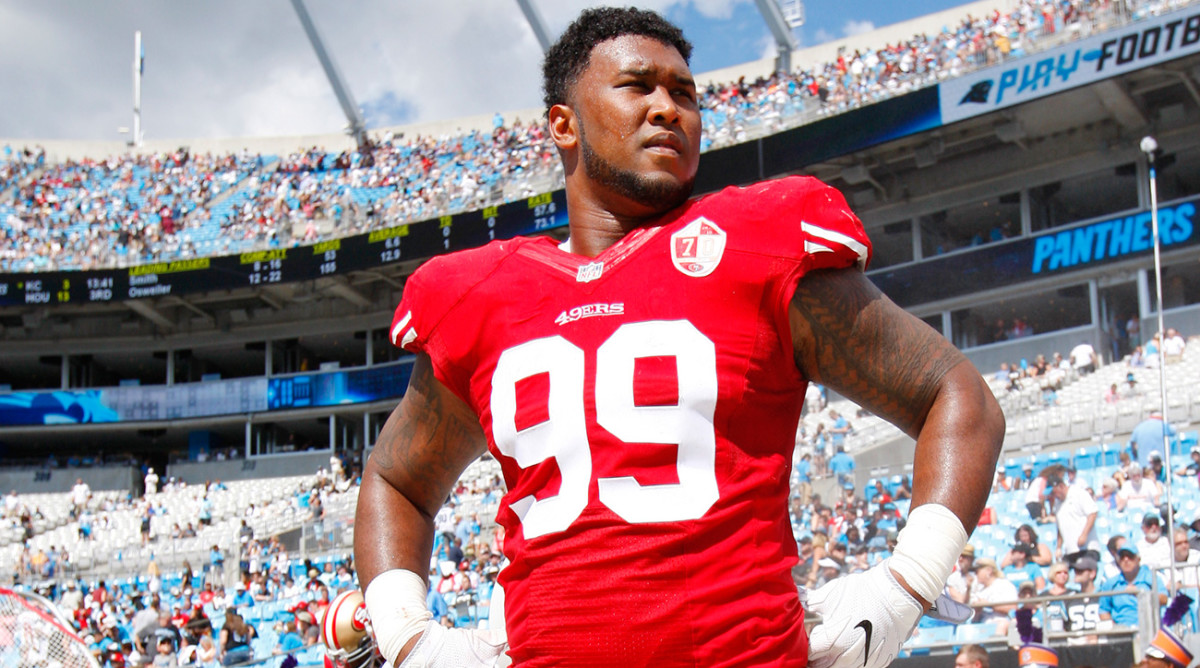
New Orleans will jump at the chance to take the best defensive lineman available. Rankins won’t last long—he racked up four sacks down the stretch after opening the season on IR—but Buckner’s durability in 2016 gives him a slight edge.
13. Dolphins select Eli Apple, CB, Ohio State (Actual Pick: Laremy Tunsil, OT)
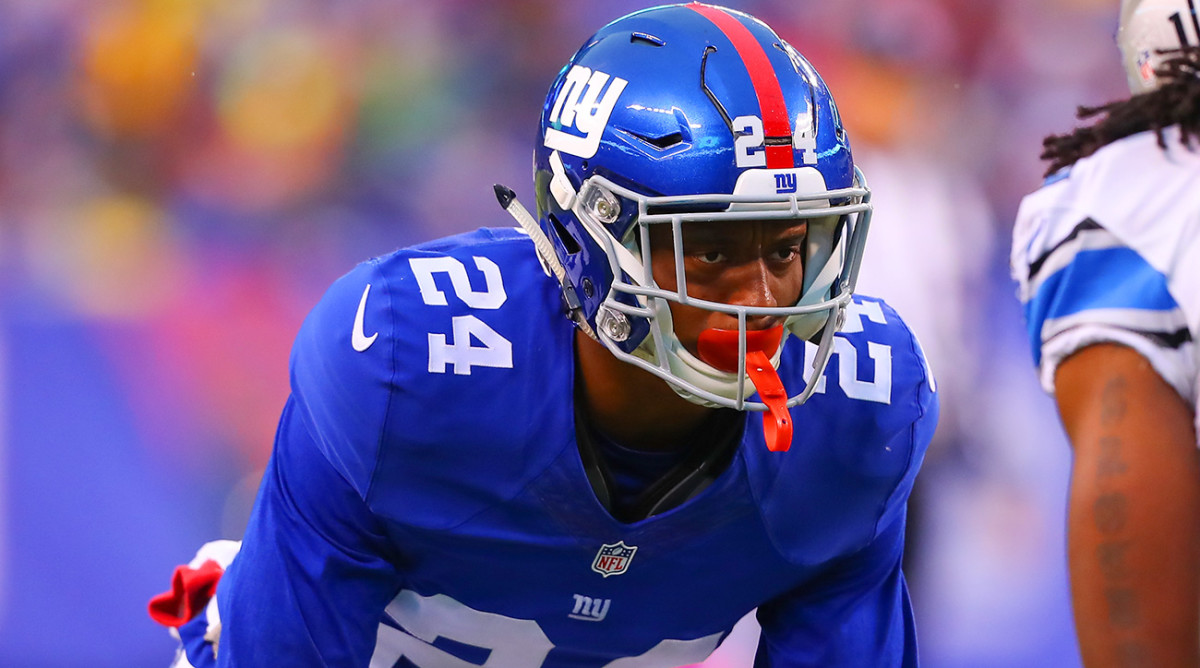
With Tunsil off the board, Miami prioritizes a secondary that limped to the finish line in 2016. Apple battled a few minor injuries but flashed his versatility at full strength.
14. Raiders select Sheldon Rankins, DT, Louisville (Actual Pick: Karl Joseph, S)

How could a unit led by Defensive Player of the Year Khalil Mack finish last in the NFL in sacks with just 25? For all their splashy moves last spring, the Raiders didn’t have enough pieces in the front seven that forced opponents to divert their attention from Mack, and it didn’t help matters that they also struggled to stop the run. Rankins could help make strides in both areas right away.
15. Browns select Chris Jones, DT, Mississippi State (Actual Pick: Corey Coleman, WR)

Cleveland’s decision to hoard receiver prospects is as much of a head-scratcher now as it was at the time—Terrelle Pryor broke onto the scene before Coleman or any of the team’s four WR selections could get their rookie seasons off the ground. The Browns’ off-season priorities begin with keeping Pryor in the fold and making the defense tougher everywhere, and Jones shined as injuries mounted around him in Kansas City’s front seven.
16. Lions select Karl Joseph, S, West Virginia (Actual Pick: Taylor Decker, OT)

Joseph would serve the dual roles of flying around the secondary to assist the Detroit DBs around emergent star Darius Slay and bringing the wood in run defense to back up an undermanned linebacking corps. He hits with a complete disregard for his own well-being, and the Lions could use that kind of flair at the second level.
17. Falcons select Keanu Neal, S, Florida (Actual Pick: Neal)
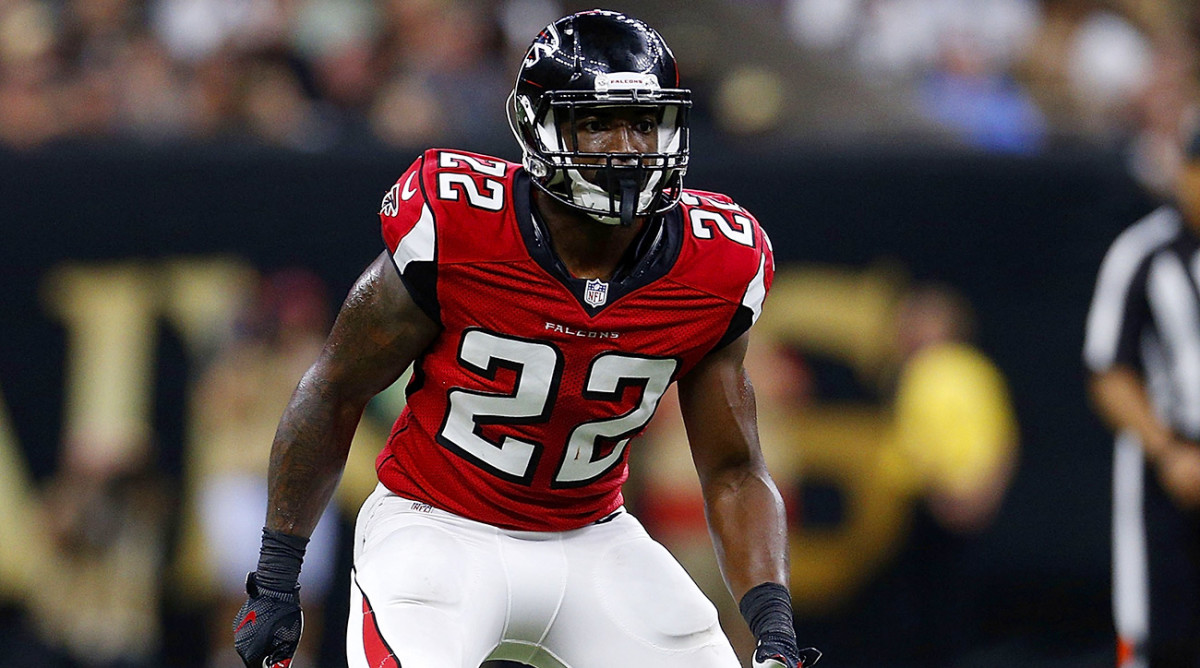
The Falcons’ 2016 draft went a long way towards turning them into Super Bowl LI runners-up. With Deion Jones long gone, there’s no shame in sticking with Neal, whom many (SI included) considered a reach at this spot at the time. The hard-hitting Florida product was asked to grow up fast in Atlanta’s young secondary, and he was the leading tackler in Super Bowl LI.
18. Colts select Ryan Kelly, C, Alabama (Actual Pick: Kelly)

Indianapolis can’t afford to throw away reliable linemen once they finally find their way onto the roster. The Colts should try to keep Kelly in town as long they have Andrew Luck under center.
19. Bills select Emmanuel Ogbah, DE, Oklahoma State (Actual Pick: Shaq Lawson, DE)

Ogbah made the kind of impact that the Bills were hoping for out of Lawson, who was limited to just one start all season after summer shoulder surgery put his debut on hold. Only four rookies had more sacks last year than Ogbah’s 5.5 off the edge.
20. Jets select Michael Thomas, WR, Ohio State (Actual Pick: Darron Lee, LB)
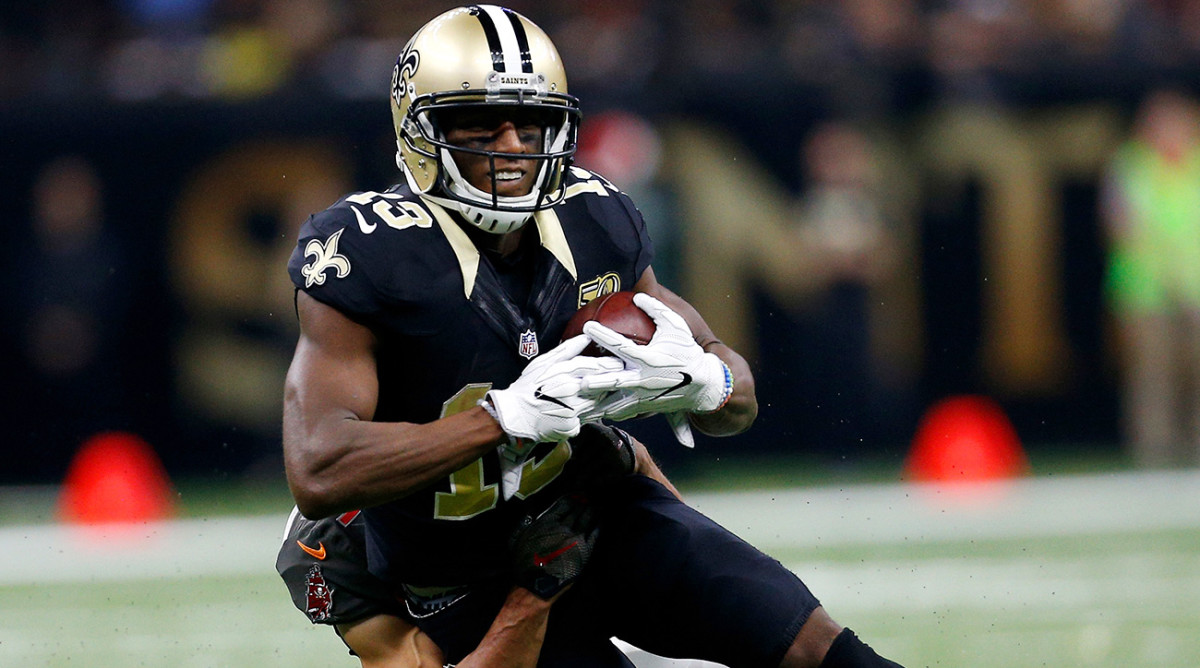
The fact that Thomas and Tyreek Hill are the two top-20 representatives of the 2016 WR class tells you all you need to know about the unpredictability that position’s rookies endured this year. (Heck, Super Bowl X-factor Malcolm Mitchell couldn’t crack this list.) Thomas looks like a budding star in the Saints’ pass-happy offense, and he could step in as either a lethal complement or an eventual replacement for Brandon Marshall.
21. Texans select Paxton Lynch, QB, Memphis (Actual Pick: Will Fuller, WR)
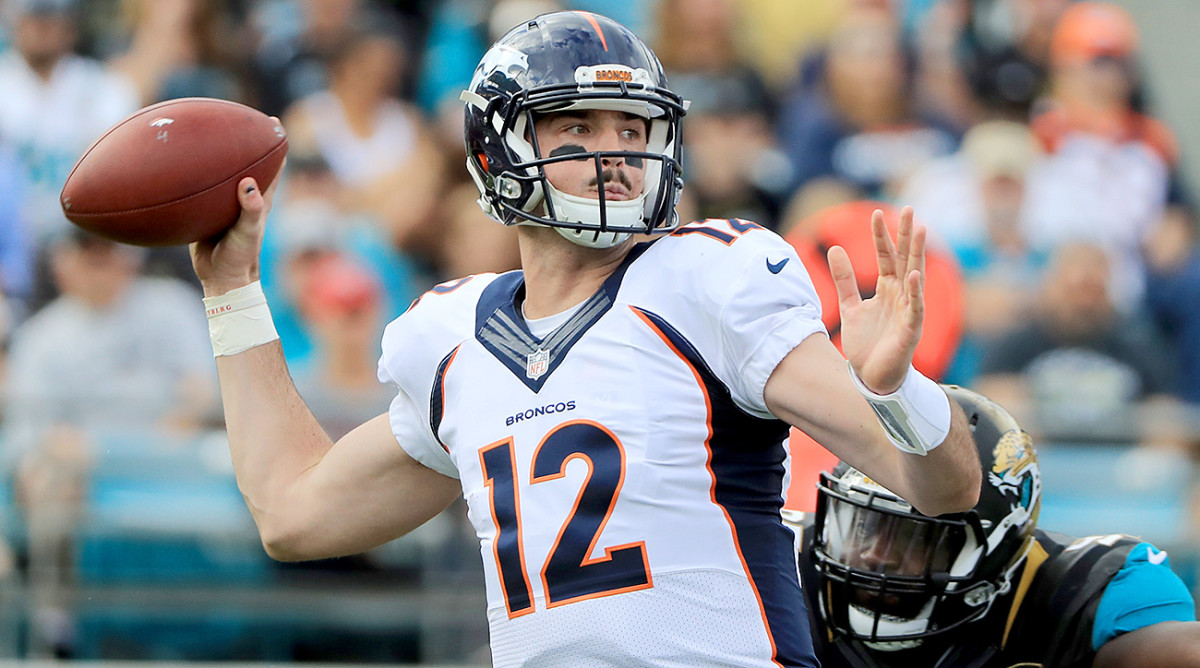
Who’s ready for the tallest quarterback controversy of all time? Houston doesn’t have to cut bait on Brock Osweiler completely after one nightmare season, but if he proves to be unsalvageable, Lynch held his own in a pair of unexpected October starts for the Broncos and seemed to be quick in picking up the secrets of playing winning football with an elite defense at one’s back.
22. Redskins select Corey Coleman, WR, Baylor (Actual Pick: Josh Doctson, WR)
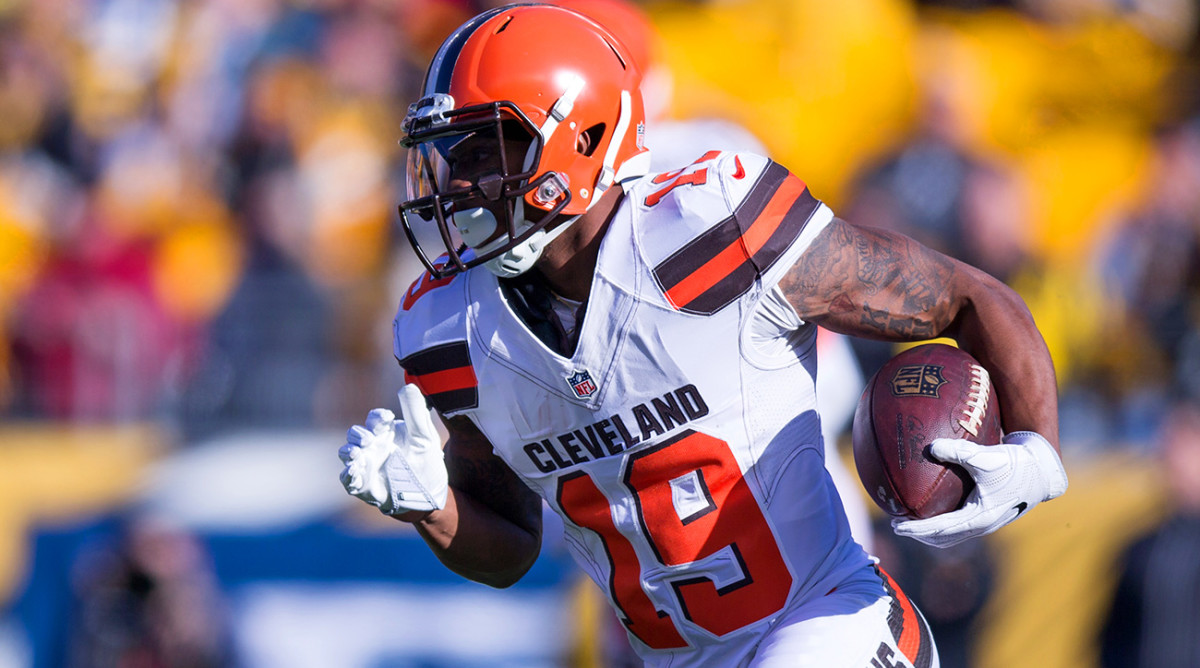
Both rookie receivers dealt with injuries in 2016—Coleman with a broken hand that cost him six games, Doctson with an Achilles injury that sidelined him for good in Week 3. The Browns’ first-round pick heads to D.C. because he was healthy enough to prove he can get separation from NFL coverage downfield despite his small stature.
23. Vikings select Taylor Decker, OT, Ohio State (Actual Pick: Laquon Treadwell, WR)
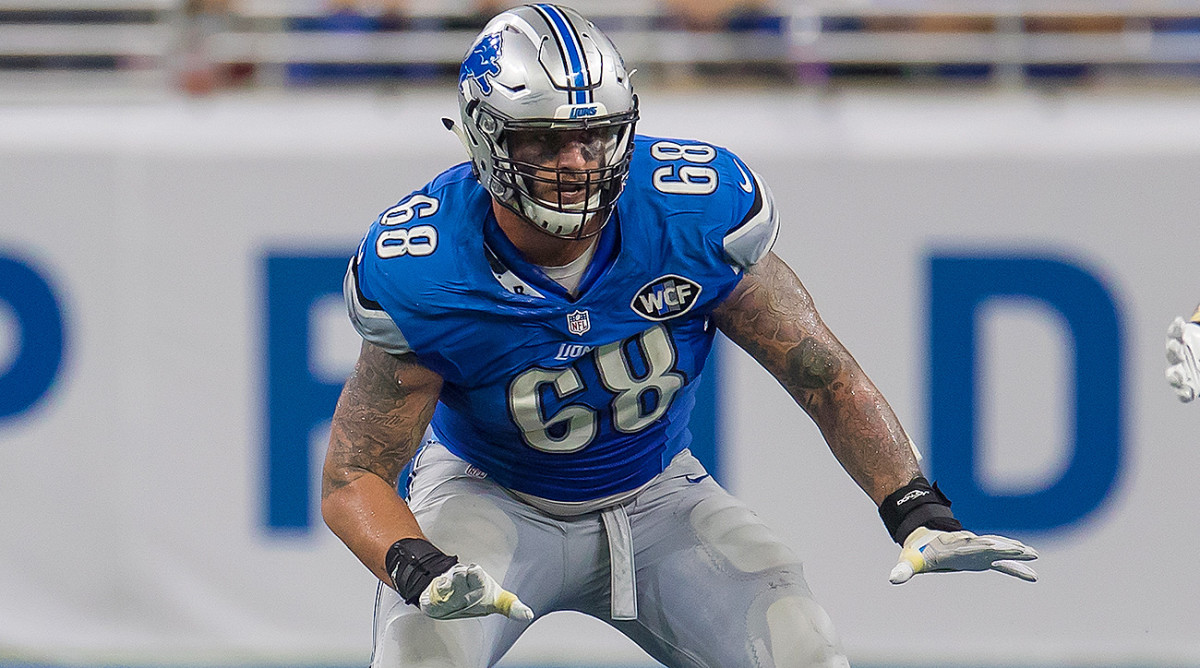
The Vikings are out of excuses for their offensive line, which has put Sam Bradford and Teddy Bridgewater in peril time after time. Minnesota hasn’t taken a lineman in the first two days of the draft since Matt Kalil was selected fourth in 2012, so it’s time to get proactive, especially as Kalil prepares to test free agency.
24. Bengals select Cody Whitehair, C, Kansas State (Actual Pick: William Jackson III, CB)

Whitehair finished with Pro Football Focus’s third-highest graded season ever by a rookie center. Wherever he fits in Cincinnati’s line, the Kansas State product can help soften the impending loss of top free agent guard Kevin Zeitler.
25. Steelers select Artie Burns, CB, Miami (Actual Pick: Burns)
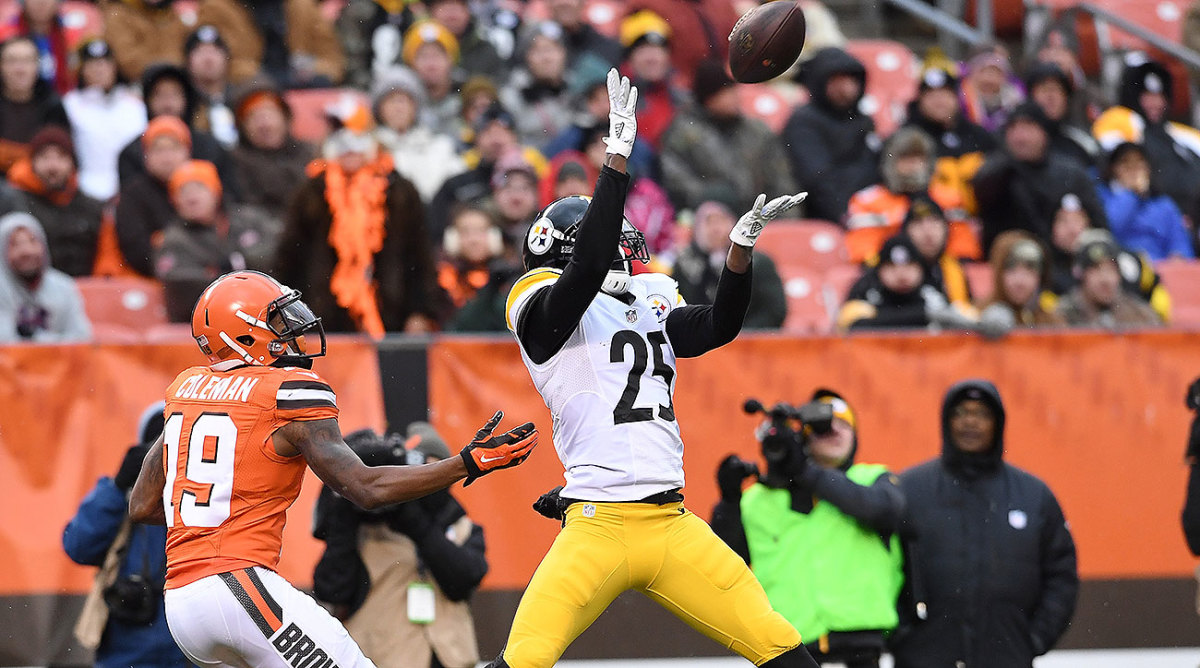
Only Jalen Ramsey earned a higher grade from PFF among 2016’s rookie DBs than Burns, who cemented a starting job down the stretch. He and effective second-round safety Sean Davis are set up to eventually run the show in the Pittsburgh secondary.
26. Broncos select Joe Thuney, OG, NC State (Actual Pick: Paxton Lynch, QB)
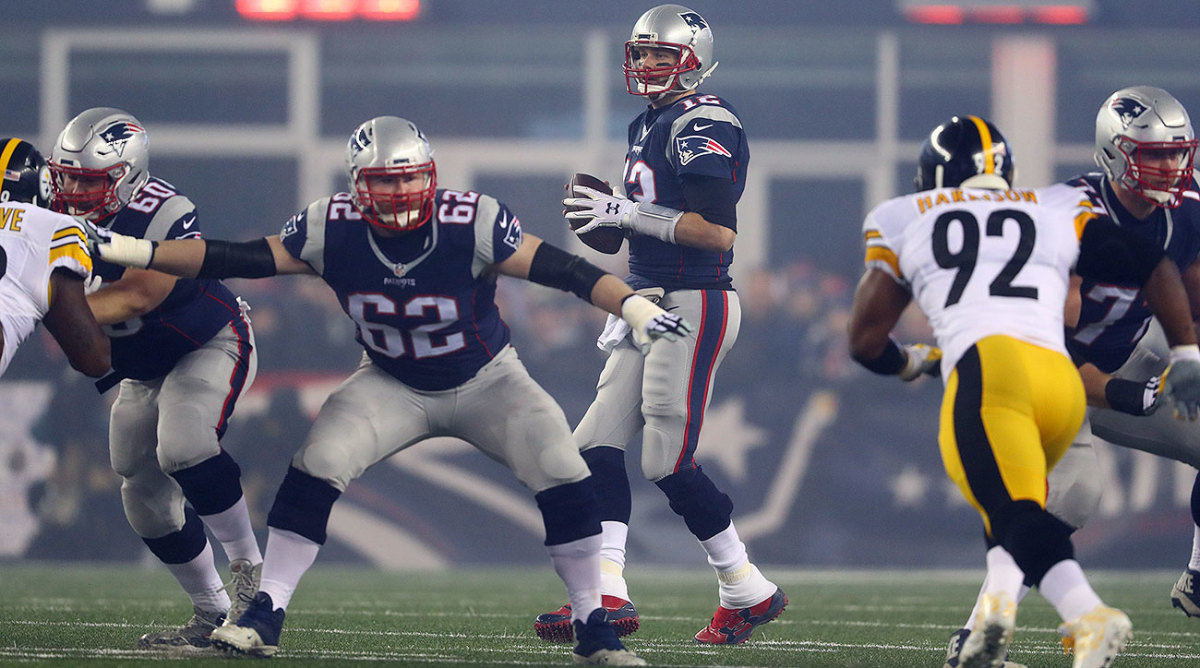
Until the Broncos land upon their next franchise quarterback, Denver’s ground game can’t run hot and cold as it did in 2016. No matter what the starting five up front looks like after the dust settles on free agency and the draft this spring, Thuney would have a job.
27. Packers select Jordan Howard, RB, Indiana (Actual Pick: Kenny Clark, DT)

With Eddie Lacy set to hit the open market, it makes more sense for Green Bay to find his successor in the draft than it does via the checkbook. Ty Montgomery the Running Back was a revelation, but who knows whether he can hold up in that hybrid role over a 16-game slate? As fun as it was watching Aaron Rodgers piece together a lethal offense with Montgomery and Aaron Ripkowski splitting carries, Green Bay should have at least one traditional back handy. Last year’s second-leading rusher should do the trick.
28. 49ers select Su'a Cravens, S, USC (Actual Pick: Joshua Garnett, OL)
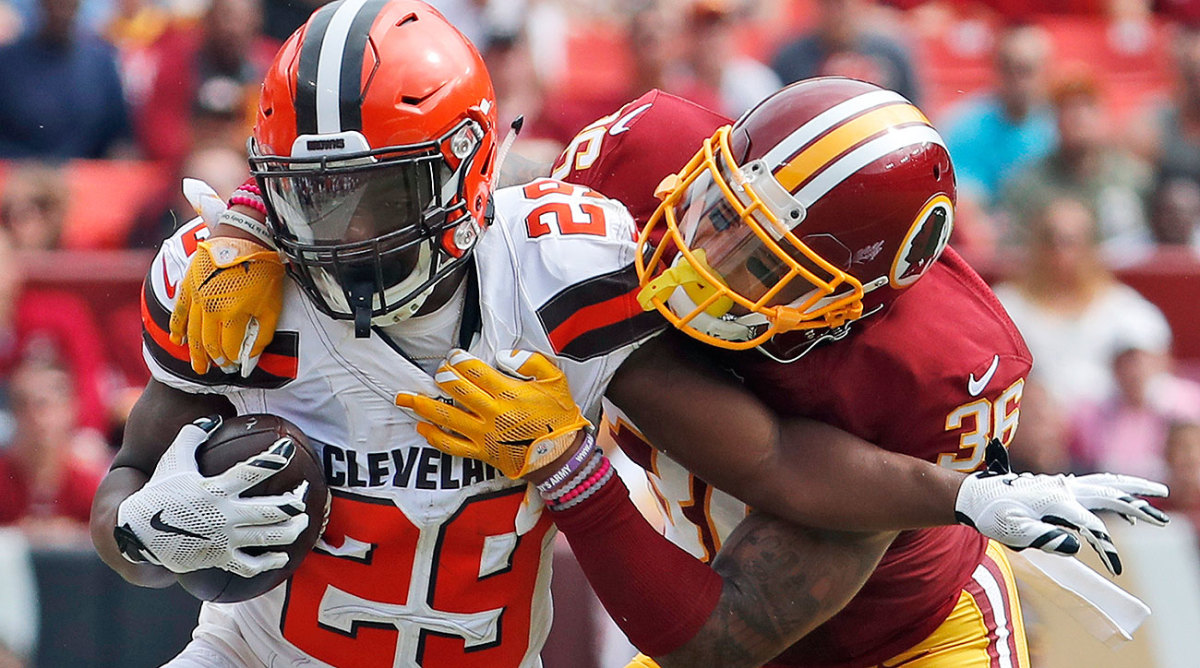
With Deion Jones already in the fold, San Francisco double-dips on defense after its trade back into the first round. Cravens had a bit of a roller-coaster 2016, missing six games with injuries and making a handful of game-turning plays in Washington, but he makes the new-look 49ers D even more flexible.
29. Cardinals select Jared Goff, QB, Cal (Actual Pick: Robert Nkemdiche, DT)
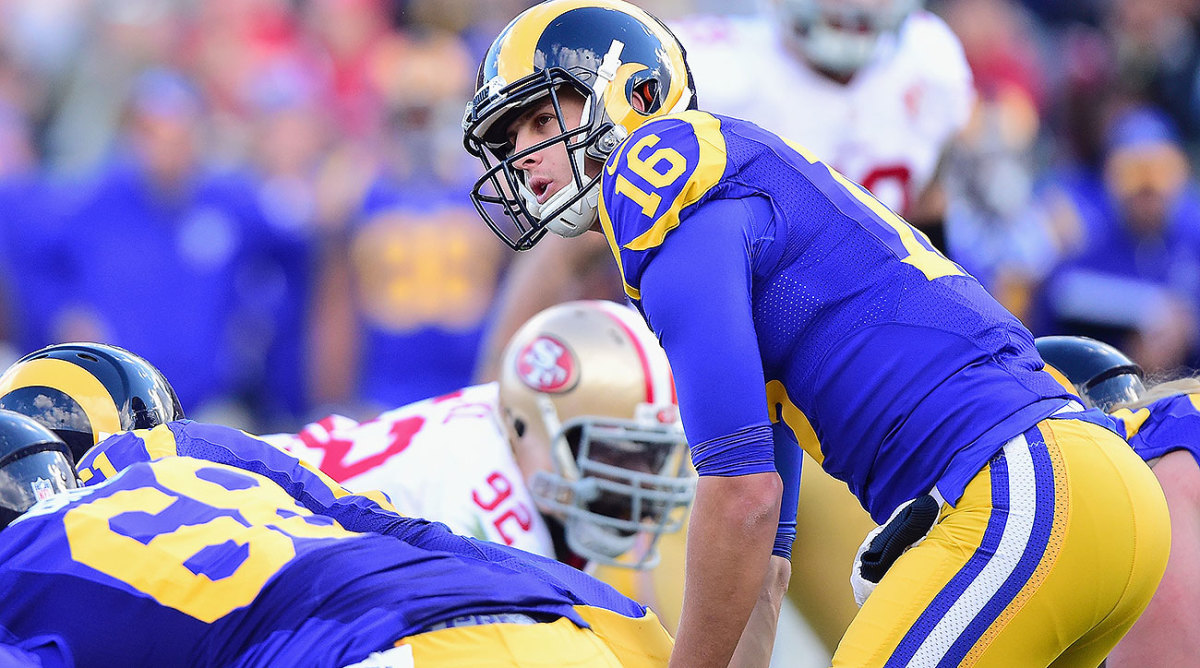
Hear me out, because this one might not be popular. Goff remains a Round 1 pick despite his disastrous debut because the curve was always going to be steep for a prospect with that much to learn and that little of a supporting cast behind him. Bruce Arians seems like the kind of coach who would say yes to Goff’s howitzer of an arm and figure out the details later, and with Carson Palmer returning for one more year, Arizona could limit the pressure to play Goff that constantly swirled in L.A.
30. Panthers select Derrick Henry, RB, Alabama (Actual Pick: Vernon Butler, DT)
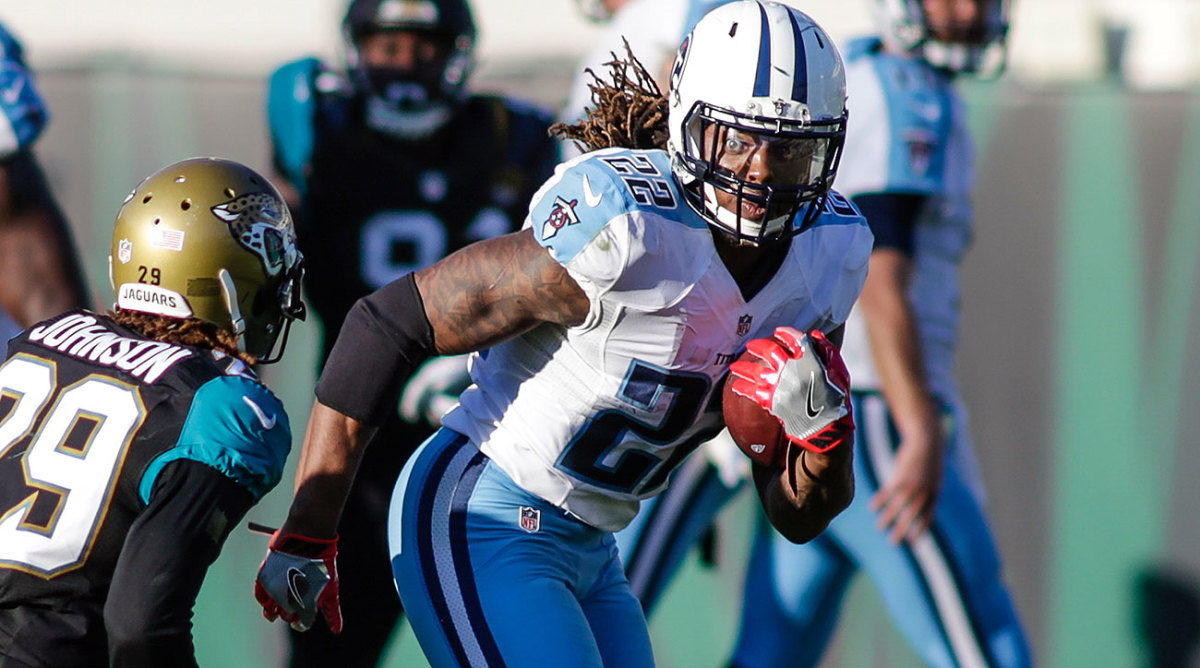
Carolina may look to the 2017 draft for a power runner that pairs well with Cam Newton, but Henry would be put to good use as a feature back. None of the three corners selected by the Panthers in later rounds are worth protecting from poachers in this do-over.
31. Seahawks select Xavien Howard, CB, Baylor (Actual Pick: Germain Ifedi, OT)
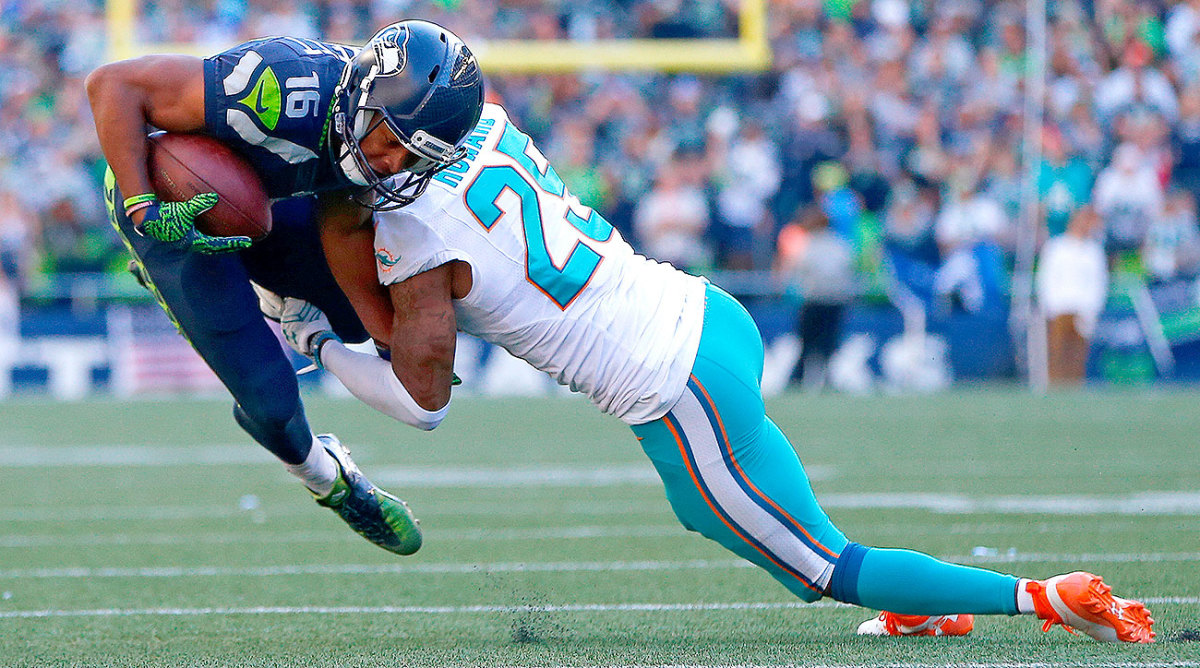
O-line remains a big need in Seattle, but if the Seahawks are committed to not committing resources to their front, let’s stay on script. DeShawn Shead tore his ACL in the playoffs, leaving snaps up for grabs in the secondary early in 2017. Howard struggled with knee troubles of his own but showed serious promise in the seven games he did get on the field for in Miami.
Los Angeles Rams (Current projected cap space: $39 million)On the chopping block: TE Lance Kendricks ($4.3 million cap hit; $0 dead money). Kendricks quietly produced a career-high 50 catches last season, but he fell a yard shy of 500 (robbing him of a $250K bonus) and found the end zone just twice. In other words, while the Rams are almost barren when it comes to reliable offensive options, Kendricks’s production does not measure up to his salary. The first $500K of that $4.25 million kicks in via a roster bonus if he’s still around next month.
San Francisco 49ers (Current projected cap space: $81.9 million)On the chopping block: S Antoine Bethea ($7 million cap hit; $1.25 million dead money). This is similar to the Buccaneers’ situation: The 49ers already have more cap space available than they’re likely to spend this off-season, so any additional cuts would be as much for performance as price tag. And Bethea was a 110-tackle defender last season. That said, new GM John Lynch could opt to roll with younger bodies in the secondary, which—coupled with his relatively high-priced contract—could put Bethea on the wrong side of the ledger.
Seattle Seahawks (Current projected cap space: $26.6 million)On the chopping block: WR Jermaine Kearse ($4 million cap hit; $3.7 million dead money). Another post-June 1 cut candidate—as you can see in the provided numbers, releasing Kearse now would free up just $300K or so, hardly worth it unless the Seahawks are just that fed up with Kearse’s disappointing production. After June 1, the savings for 2017 bumps up to $2.2 million. If Tyler Lockett remains on track to be ready for Week 1 following his gruesome playoff leg injury, Kearse projects as no better than Seattle’s fourth-best receiver.
